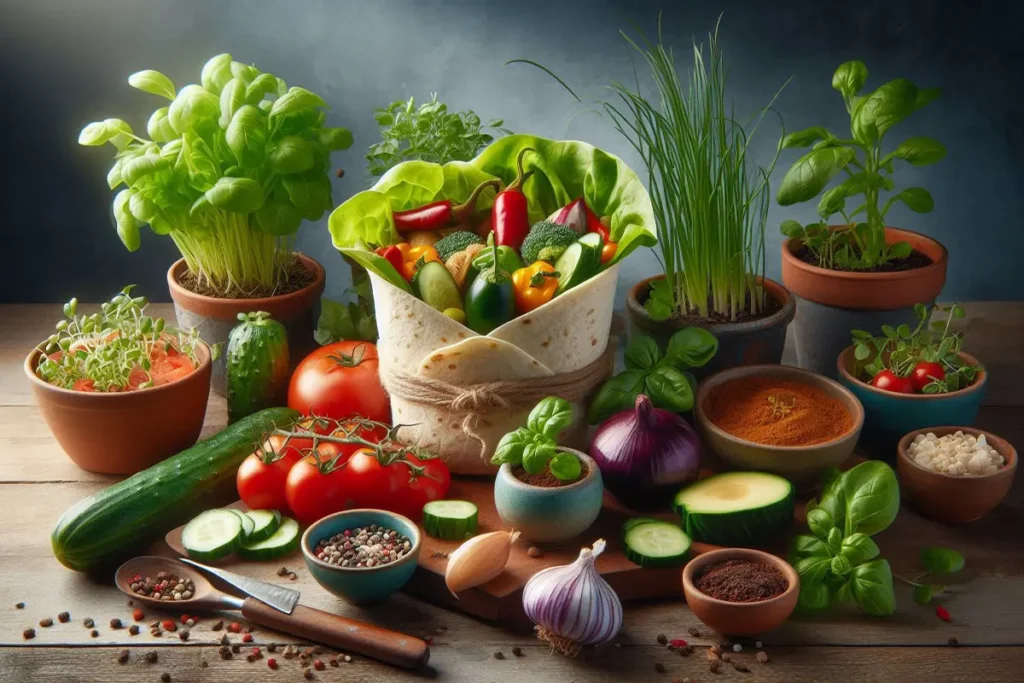National Burrito Day: Grow Your Own Ingredients for Fresh Burrito Fillings

Apr
Celebrate National Burrito Day by cultivating your own garden ingredients. This guide shows you how to grow tomatoes, peppers, beans, and other fresh fillings to create delicious, healthy burritos while enjoying sustainable gardening practices.
National Burrito Day is more than a celebration of one of America’s favorite foods—it’s also a reminder of the benefits of fresh, homegrown produce. By growing your own ingredients, you ensure that every bite is packed with flavor and nutrition, and you gain the satisfaction of nurturing plants from seed to plate. This article provides a practical guide for gardeners and food enthusiasts looking to combine culinary delight with sustainable practices.
The Connection Between Gardening and Fresh Food
Growing your own food has long been recognized as a way to improve diet quality, reduce environmental impact, and connect with nature. For burrito lovers, nothing beats the taste of freshly harvested vegetables. When you cultivate your garden, you control the use of pesticides, enrich the soil naturally, and enjoy produce at its peak freshness. This approach not only elevates the quality of your burrito fillings but also supports a healthier lifestyle.
Essential Burrito Filling Ingredients to Grow
1. Tomatoes
Tomatoes are a staple in many burrito recipes. They provide a juicy, tangy flavor that complements the heartiness of beans and meats.
-
Growing Tips: Choose a variety of tomato suited to your climate—be it cherry, roma, or beefsteak. Plant them in well-drained soil with plenty of sunlight, and consider staking or using cages to support the plants as they grow.
2. Bell Peppers
Bell peppers add color, crunch, and a sweet flavor to burritos. Their versatility makes them ideal for both raw salsas and cooked fillings.
-
Growing Tips: Start seeds indoors in cooler climates, then transplant once the risk of frost has passed. Ensure your pepper plants receive full sun and maintain a consistent watering schedule to prevent blossom end rot.
3. Beans
Beans offer protein and a hearty texture to burritos. Whether you prefer black beans, pinto beans, or kidney beans, growing them at home is both rewarding and practical.
-
Growing Tips: Beans thrive in warm soil. Direct sow them in the garden after the last frost date. Support climbing varieties with trellises and practice crop rotation to maintain soil health.
4. Cilantro
Cilantro is a popular herb in Mexican cuisine, adding a burst of fresh, citrusy flavor that balances rich fillings.
-
Growing Tips: Plant cilantro in cooler weather as it tends to bolt in high heat. Sow the seeds directly into the garden and thin the seedlings to avoid overcrowding.
5. Avocado (for guacamole)
Avocado provides creaminess to any burrito when mashed into a fresh guacamole. Although growing an avocado tree requires a bit more patience, the results can be well worth the effort.
-
Growing Tips: In warmer climates, avocado trees can be grown outdoors. In cooler areas, consider growing them in a container that can be moved indoors during winter. They need plenty of sunlight and well-draining soil.
Planning and Preparing Your Garden
A successful garden begins with careful planning. Consider these steps:
-
Site Selection: Choose a location that receives at least 6-8 hours of sunlight per day. Good drainage is essential to prevent waterlogging and root rot.
-
Soil Preparation: Enrich your soil with organic compost. This not only improves fertility but also enhances moisture retention and structure.
-
Seasonal Planting: Be mindful of your region’s climate. Plant cool-weather crops such as cilantro early in the season, while warm-weather crops like tomatoes and peppers should be planted after the danger of frost has passed.
-
Space Management: Design your garden layout to maximize space. Raised beds and vertical gardening can help accommodate a variety of plants in a limited area.
Sustainable Gardening Practices
Sustainability is a core benefit of growing your own produce. By adopting eco-friendly practices, you contribute to a healthier environment:
-
Organic Methods: Use natural fertilizers and pest control methods. Companion planting, such as pairing tomatoes with basil, can deter pests naturally.
-
Water Conservation: Employ drip irrigation systems or soaker hoses to reduce water waste. Mulching around your plants helps maintain soil moisture and control weeds.
-
Biodiversity: Plant a diverse range of crops to support local ecosystems. Biodiversity not only improves the resilience of your garden but also attracts beneficial insects.
Integrating Your Garden Harvest into Burrito Recipes
Once your garden yields a bountiful harvest, you can transform the fresh ingredients into flavorful burrito fillings:
-
Fresh Salsa: Dice tomatoes, bell peppers, and cilantro to create a zesty salsa. Add a squeeze of lime and a pinch of salt for a simple yet delicious topping.
-
Bean Filling: Simmer your homegrown beans with spices such as cumin and garlic. A slow-cooked bean mixture can be a hearty, nutritious component of your burrito.
-
Guacamole: Mash a ripe avocado with chopped cilantro, diced tomatoes, lime juice, and salt for a classic guacamole. Its creamy texture is a perfect contrast to the crunchy vegetables.
-
Grilled Vegetables: Slice bell peppers and tomatoes, lightly season them, and grill for a smoky flavor that adds depth to your burrito.
Conclusion
National Burrito Day is an excellent opportunity to celebrate the connection between fresh produce and flavorful meals. By growing your own ingredients, you not only enhance the quality of your burrito fillings but also embrace a sustainable lifestyle that benefits both your health and the environment. With careful planning, realistic expectations, and sustainable practices, your garden can become a thriving source of delicious ingredients. Enjoy the process of growing, harvesting, and cooking, and let your garden inspire healthier eating habits year-round.
